Striped Shields: The Fly-Repelling Power of Zebra Patterns
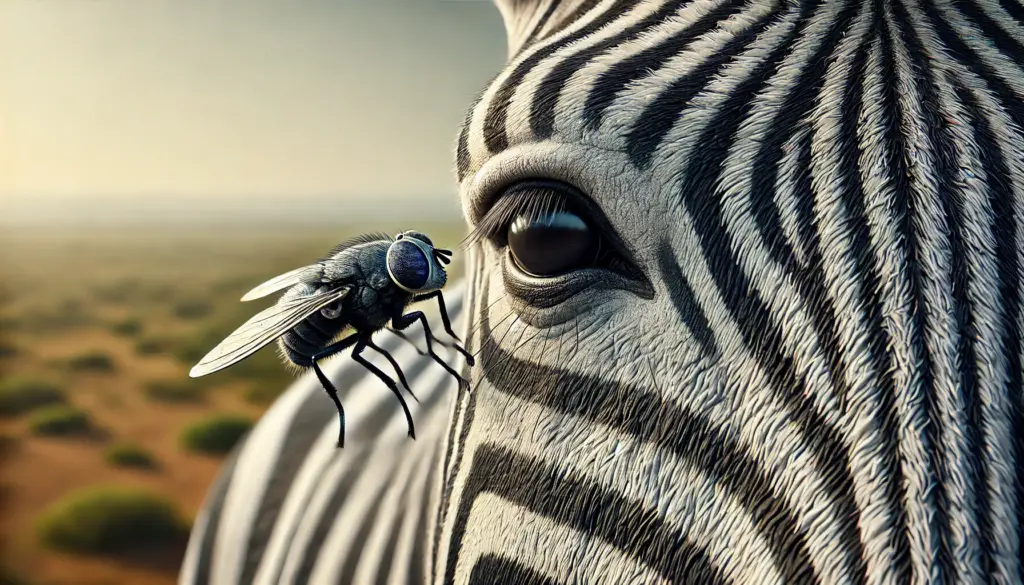
Zebra stripes may be nature’s most effective insect repellent. A 2019 study in PLOS ONE found that biting flies were 2.5 times less likely to land on striped surfaces compared to solid colors. High-speed video analysis showed flies failing to decelerate when approaching zebras, unlike their controlled landings on horses. Flies landed on zebras less than 25% as often as they did on horses. This defense is crucial, as biting flies can drain up to 1 pint of blood daily from animals and transmit diseases.
A 2022 study in Scientific Reports confirmed that zebra stripes repel biting flies under natural conditions and at close range. The study used real animal pelts, finding that hungry flies were 1.5 to 2.5 times more likely to land on plain tan impala skin than on stripy zebra skin. Interestingly, stripe width didn’t matter – flies just couldn’t handle stripes. These findings provide strong evidence for the adaptive significance of zebra stripes in protecting against biting insects.
Cool Stripes? The Zebra’s Potential Built-in Air Conditioning

Some scientists propose that zebras might have nature’s own climate control system. A 2015 study in Royal Society Open Science found that zebras in hotter climates tend to have more pronounced stripes. Analyzing 16 zebra populations, researchers found temperature was the strongest predictor of striping among 29 environmental variables. The theory suggests that the contrast between black and white stripes could create small-scale air movements, helping cool the animal in hot environments.
However, this theory is controversial. A 2018 study in Scientific Reports using striped water-filled barrels found no significant temperature difference between striped and solid-colored surfaces. Some scientists suggest the interaction between stripes and zebra sweat might create a more complex cooling mechanism. With temperature differences up to 59°F between black and white stripes observed in some studies, the jury is still out on whether zebras are truly keeping cool with stripes.
Hiding in Plain Sight: Debunking the Zebra Camouflage Myth

For years, zebra stripes were thought to be nature’s camouflage. However, a 2016 study in PLOS ONE challenged this idea. Using sophisticated image processing, researchers simulated how zebras appear to lions and spotted hyenas. Surprisingly, beyond 164 feet in daylight or 98 feet at twilight, predators can barely distinguish the stripes. At these distances, a lion is more likely to smell or hear a zebra than be fooled by its stripes.
Research from the University of Calgary further debunked this theory, showing that lions can spot striped zebras just as easily as solid-colored prey like waterbuck or topi. Zebras often inhabit open grasslands where their bold stripes make them stand out. These findings suggest that stripes offer little advantage in predator evasion, challenging long-held beliefs about zebra stripe evolution.
Nature’s Barcode: The Unique Identity of Every Zebra

Zebra stripes are nature’s own barcode system. According to the San Diego Zoo, no two zebras have exactly the same stripe pattern, aiding in individual recognition within herds. This uniqueness plays a crucial role in zebra social life, allowing individuals to recognize each other and maintain group cohesion. The distinctive patterning continues to fascinate researchers and wildlife enthusiasts alike.
Interestingly, zebras are actually black animals with white stripes, not vice versa. Embryological evidence shows that the underlying skin color is black, with white stripes added during development. Plains zebras can sport between 26 to 55 vertical stripes on their sides, while the Grévy’s zebra can boast up to 80 stripes. This variation in stripe patterns across species and individuals showcases the diversity within zebra populations and challenges our perceptions of these iconic animals.
Zebra Society and Communication: Complex Behaviors and Social Structures
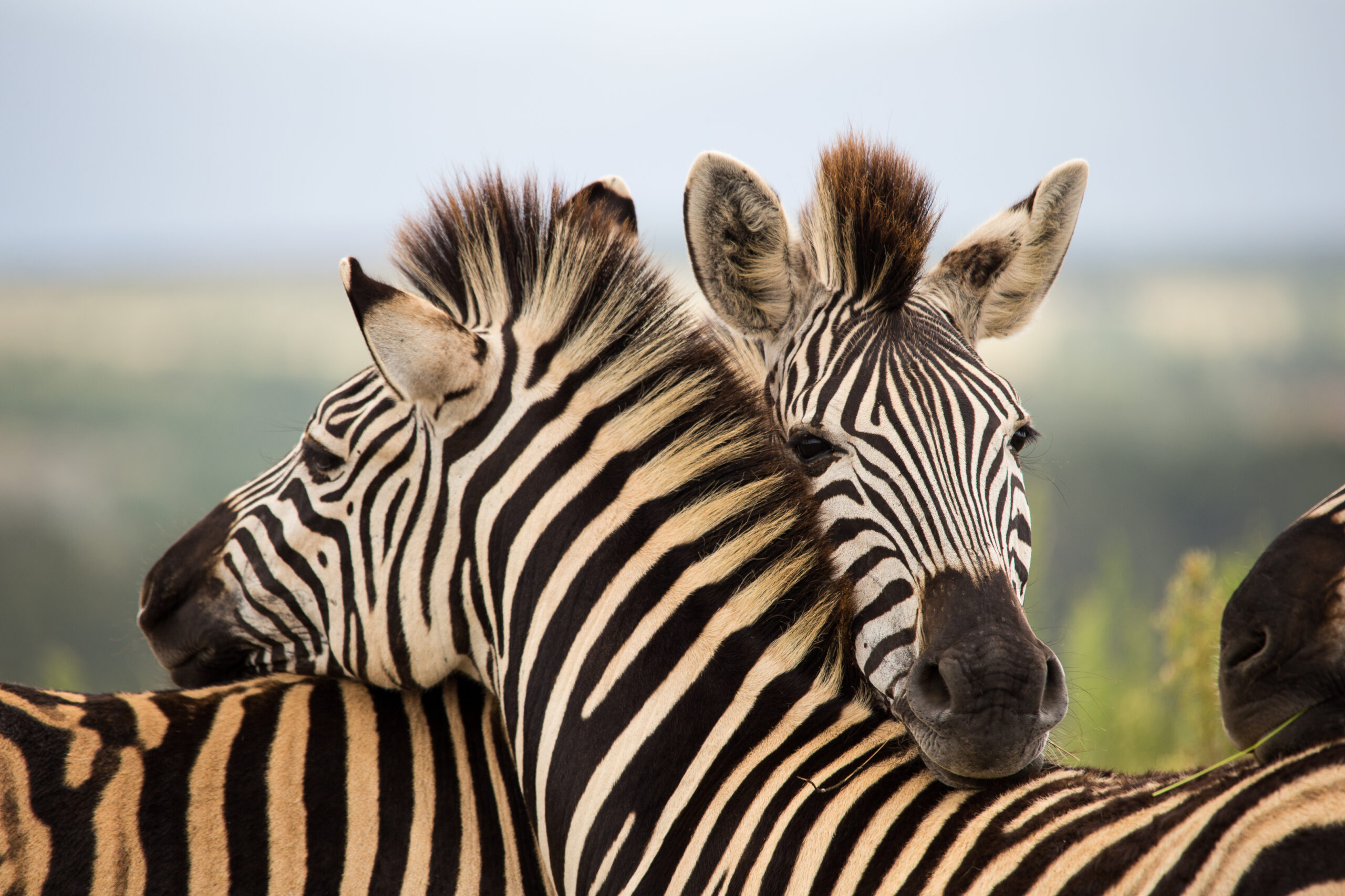
Zebras are highly social animals with sophisticated communication skills. Research published in Animal Behaviour shows that zebras use at least six distinct vocalizations. Snorts signal contentment, while a two-syllable cry warns the herd of approaching predators. The African Wildlife Foundation reports that these vocalizations play a crucial role in maintaining social bonds and coordinating group activities.
Beyond vocalizations, zebras use a range of non-verbal cues. A study in the Journal of Comparative Psychology found that their large, expressive ears are constantly in motion, signaling mood and intent to other herd members. A zebra’s posture can indicate its emotional state, with a relaxed stance signaling comfort and a tense, alert posture warning of potential danger. Even grooming each other, known as allogrooming, serves as a form of social bonding. This multifaceted communication system allows zebras to maintain complex social relationships and respond quickly to environmental challenges.
Stripes on the Run: Zebras as Nature’s Escape Artists
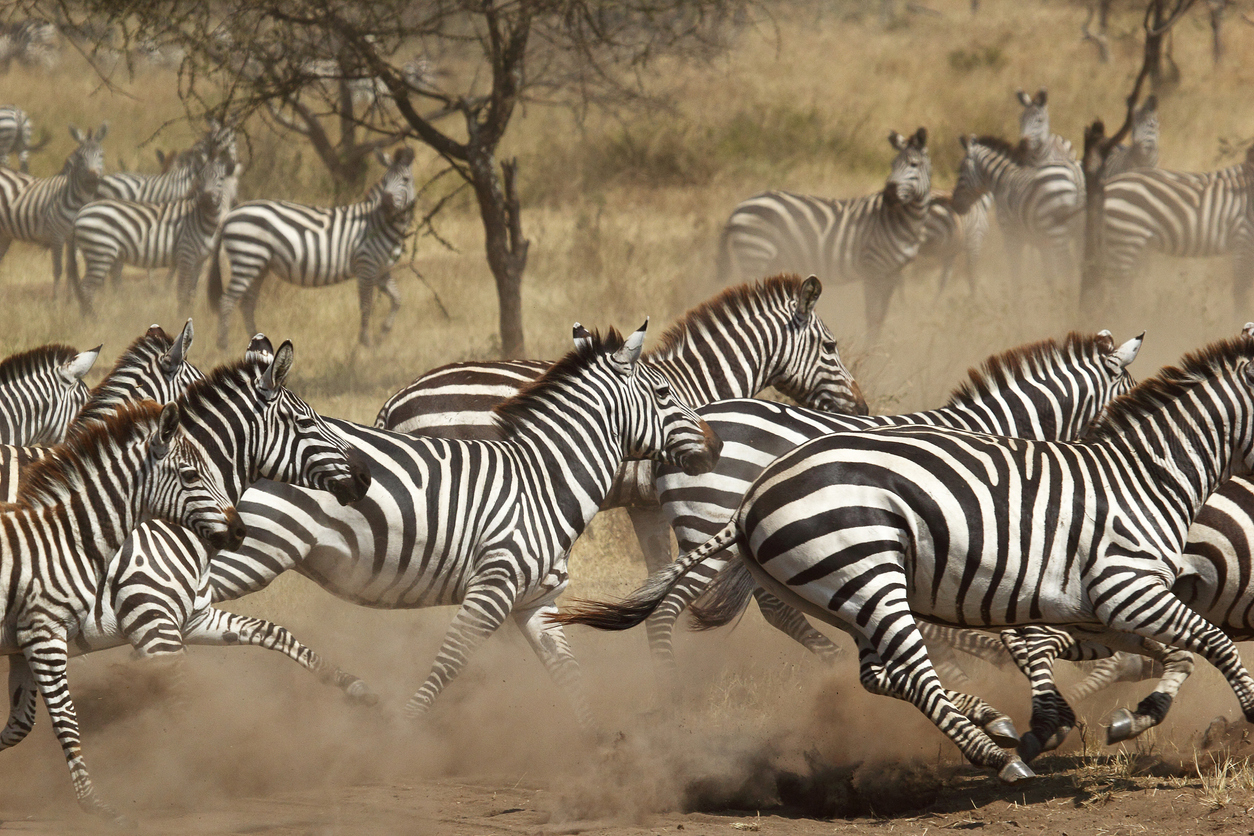
Zebras are built for speed and endurance. National Geographic reports that these striped speedsters can dash at speeds up to 40 mph. What’s more impressive is their stamina, allowing them to run for extended periods. This combination of speed and endurance is crucial for survival in the open plains of Africa, where predators like lions and hyenas are always on the prowl. Zebras achieve this impressive speed despite having just one toe on each foot, a testament to their specialized anatomy.
Zebras also have a powerful defense mechanism – their kick. According to the San Diego Zoo, their hind legs can deliver a kick with nearly 3,000 pounds of force, strong enough to break a lion’s jaw. This formidable defense makes zebras dangerous prey, even for determined predators. A study in the Journal of Experimental Biology found that zebras have excellent reflexes and agility, able to change direction quickly during a chase. This combination of speed, endurance, strength, and agility makes zebras formidable prey, capable of outrunning or fighting off many predators.
Survival Stripes: How Zebras Adapt to Thrive in Harsh Environments
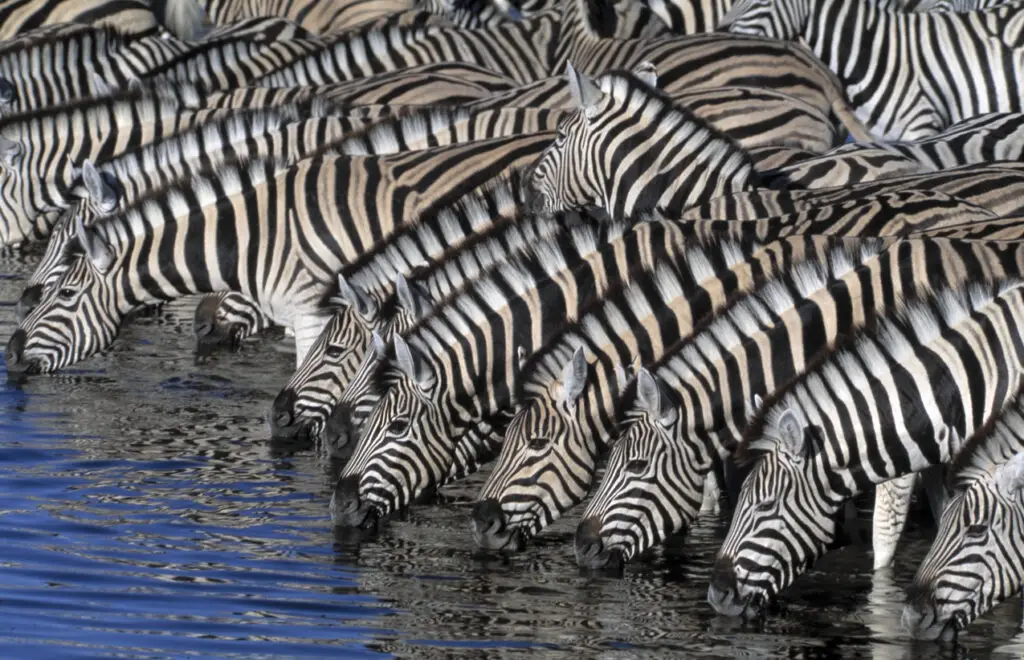
Zebras have evolved several adaptations for their environments. Research published in the Journal of Experimental Biology found that their large, erect ears not only help them hear approaching predators but also play a role in regulating body temperature. By increasing blood flow to the ears and allowing heat to dissipate, zebras can cool themselves in hot African climates. Zebras have excellent eyesight, with eyes positioned on the sides of their head, providing a nearly 360-degree view. This wide field of vision helps them spot potential threats from almost any direction.
Additionally, a study in the Journal of Zoology found that their digestive system is adapted to process low-quality vegetation, allowing them to survive in areas where other grazers might struggle. Zebras have a highly efficient hindgut fermentation system that enables them to extract nutrients from tough, fibrous grasses. Their teeth are also well-suited for their grazing lifestyle, with high-crowned molars that continue to grow throughout their lives to compensate for wear from abrasive plant materials. These adaptations make zebras well-equipped to face the challenges of their diverse African habitats.
The Historical Puzzle: A Century-Old Scientific Mystery
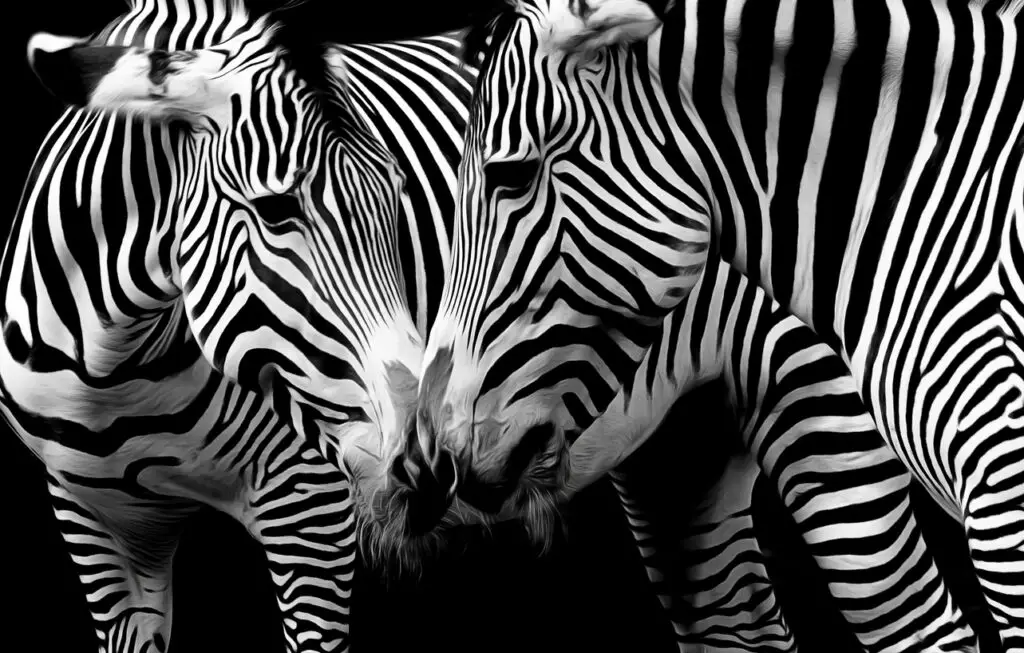
The question of why zebras have stripes has puzzled scientists for over a century. Charles Darwin pondered this mystery in his 1871 book “The Descent of Man,” speculating that the stripes might play a role in sexual selection. Since then, numerous theories have been proposed and debated, making zebra stripes one of the longest-standing mysteries in evolutionary biology.
In the early 20th century, American naturalist Abbott Thayer proposed that zebra stripes served as camouflage, an idea that persisted for decades. However, as our understanding of animal vision and behavior has advanced, so too have the hypotheses about zebra stripes. The enduring nature of this question highlights the complexity of evolutionary adaptations and the challenges of studying them in the wild.
Ongoing Debates: The Scientific Community Divided
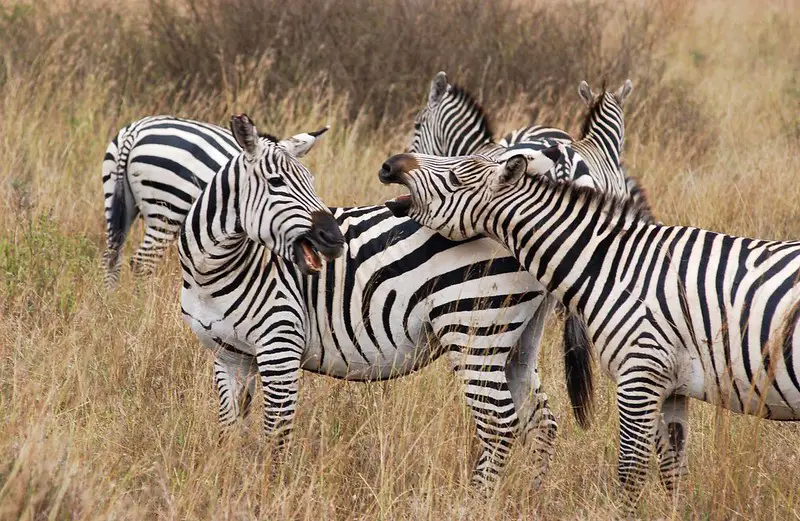
Despite extensive research, the scientific community remains divided on the primary function of zebra stripes. A 2016 review in Royal Society Open Science highlighted the ongoing debates, with evidence supporting multiple hypotheses. While the fly-repellent theory currently has the strongest support, researchers continue to investigate other potential benefits of striping.
The debate extends beyond just the function of stripes. Scientists also disagree on how to best study this question. Some argue for more field studies in natural habitats, while others advocate for controlled experiments. This diversity of approaches reflects the complexity of the issue and the need for interdisciplinary research to fully understand zebra stripes.
Future Research: New Technologies and Approaches
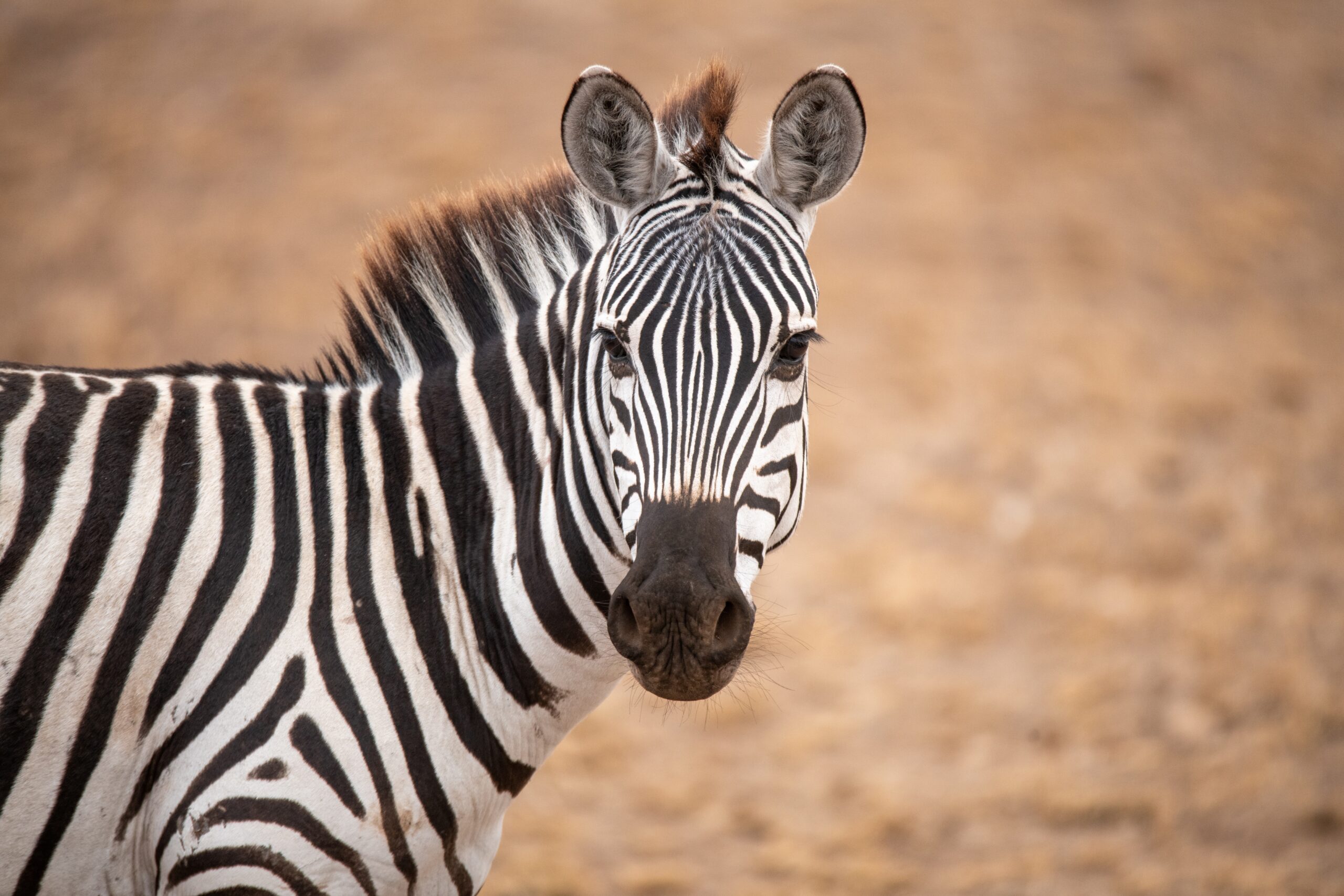
As technology advances, new tools are opening up exciting possibilities for zebra stripe research. Thermal imaging cameras are allowing scientists to study the temperature regulation properties of stripes in unprecedented detail. Meanwhile, high-speed cameras and computer vision algorithms are providing new insights into how flies interact with striped surfaces.
Genetic studies are also shedding light on the evolution of zebra stripes. Research published in Nature Communications identified genes associated with striping patterns, opening up new avenues for understanding how and why these patterns evolved. As these technologies continue to develop, they promise to bring us closer to solving the enduring mystery of zebra stripes.
The Bigger Picture: Zebra Stripes and Ecosystem Health

Understanding zebra stripes isn’t just about satisfying scientific curiosity. It has important implications for conservation and ecosystem management. A study in the journal Conservation Biology found that zebras play a crucial role in maintaining grassland ecosystems. Their grazing patterns influence vegetation structure and diversity, which in turn affects other species.
Moreover, the factors influencing zebra stripes – be they environmental pressures, predator-prey dynamics, or disease vectors – are likely to be affected by climate change and habitat loss. By unraveling the mystery of zebra stripes, we gain valuable insights into how animals adapt to changing environments, knowledge that could be crucial for conservation efforts in the face of global environmental challenges.


